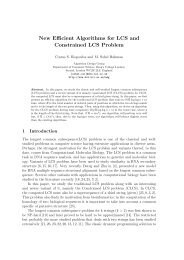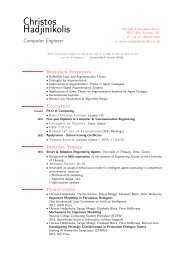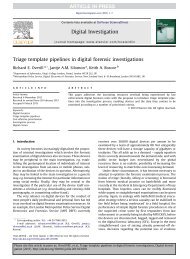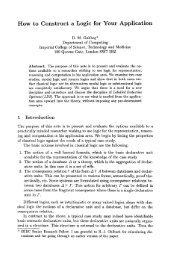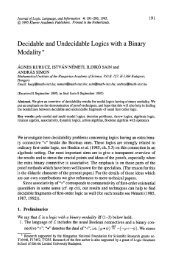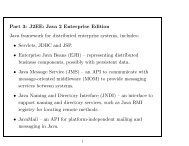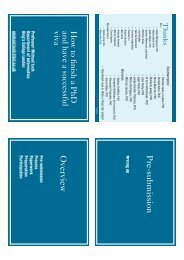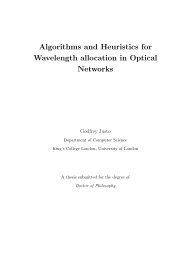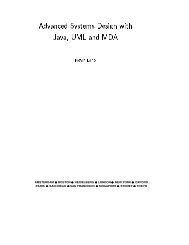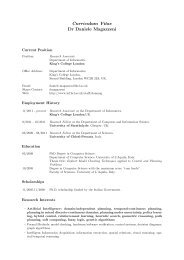Granular jamming with hydraulc control - King's College London
Granular jamming with hydraulc control - King's College London
Granular jamming with hydraulc control - King's College London
You also want an ePaper? Increase the reach of your titles
YUMPU automatically turns print PDFs into web optimized ePapers that Google loves.
draw system. The stiffness characteristics of a water-filled jointin a unstiffened state were the same as an air-filled joint, as seenin Fig. 3.However, while the use of water has many advantages overair, for a granular <strong>jamming</strong> system, there are also several disadvantagesobserved from our experiments. In a pneumatic system,particularly one involving a continuously running vacuum pump,leaks <strong>with</strong>in the system would decrease the stiffness performanceof granular <strong>jamming</strong>, but not render it unusable. For a hydraulicsystem, however, the fixed-volume syringe could not overcomeleakages. When the hydraulic system began filling <strong>with</strong> air dueto a leak, the variable stiffness joint could no longer stiffen, evenif the syringe was drawn the full 10 mL. Reversing the syringetended to expand the membrane, rather than release the air, aswell. Another disadvantage of a hydraulic system is that theweight of water may be too much for the system. Though thehydraulic system can achieve the same stiffness as a pneumaticone, the mass of the water collected in a chamber at each jointwould add weight to a multi-jointed snake. However, joint designor compensation related to the added weight is outside thescope of this paper.It should be noted that the hydraulic system could theoreticallyachieve a higher stiffness if the syringe in the experimentalsetup were more robust. Though the hydraulic pressure wasnot measured, the author estimates that full evacuation was notachieved in the joint. The brackets supporting the syringe wereflexing during the experiment, which could have skewed the experimentalresults. The linear module and motor, however, wereable to actuate and maintain a stable position.To test the feasibility of transforming granular <strong>jamming</strong> intoan untethered system, a 3 volt, battery powered DC motor wasattached to the linear module <strong>control</strong>ling the syringe (Fig. 2).The motor was able to successfully jam the joint by evacuating0.5 mL of water and holding its position on the linear module.CONCLUSIONS AND FUTURE WORKSIn this paper we demonstrate a novel means of regulatingthe stiffness of a granular <strong>jamming</strong> joint by the use of deairedwater. The results show that a hydraulic granular <strong>jamming</strong> systemrequires 20 times less volume than a pneumatic system toachieve the same stiffness. Additionally, a hydraulic system isable to achieve a 50% lower minimum stiffness than a pneumaticone. This opens a new field in granular <strong>jamming</strong> research forrobotics, as a hydraulic granular <strong>jamming</strong> system can be used formobile and field robotics, as well as in the medical field.Future works include studying the granular interactions <strong>with</strong>water or other hydraulic base stocks. Certain granules may besusceptible to cohesion or other interparticle forces when introducedto a fluid. Such phenomenon can be exploited to achievebetter stiffnesses and hysteresis in future compliant joints. Furthermore,additional investigations on intermediate stiffness levelsshould be conducted for hydraulic systems. In pneumatic systems,an intermediate vacuum pressure level results in a semistiffand a semi-soft state. However, in hydraulic systems, thelinear module regulating the syringe should have an impedance<strong>control</strong>ler to dynamically alter the desired stiffness of the joint.Improving the current numerical model and simulation methodswill also be studied. Lastly, further research will be done onminiaturizing the hydraulic granular <strong>jamming</strong> joint system andcreating an independent, <strong>control</strong>lable module.ACKNOWLEDGMENTThis work was partly funded by the Guy’s and St Thomas’Hospital Trust Foundation, the Engineering and Physical SciencesResearch Council (EPSRC), UK, under grant agreementEP/I028773/1, and by the Seventh Framework Programme ofthe European Commission under grant agreement 287728 in theframework of EU project STIFF-FLOP.REFERENCES[1] Aste, T., and Weaire, D., 2008. The pursuit of perfect packing.Taylor & Francis.[2] Liu, A. J., and Nagel, S. R., 1998. “Nonlinear dynamics:Jamming is not just cool any more”. Nature, 296, pp. 21–22.[3] Brown, E., Rodenberg, N., Amend, J., Mozeika, A., Steltz,E., Zakin, M. R., Lipson, H., and Jaeger, H. M., 2010. “Universalrobotic gripper based on the <strong>jamming</strong> of granular material”.Proceedings of the National Academy of Sciences ofthe United States of America, 107(44), pp. 18809–18814.[4] Mitsuda, T., Kuge, S., Wakabayashi, M., and Kawamura,S., 2002. “Wearable haptic display by the use of a particlemechanical constraint”. Proceedings. 10th Symposium onHAPTICS 2002, pp. 153–158.[5] Loeve, A. J., van de Ven, O. S., Vogel, J. G., Breedveld,P., and Dankelman, J., 2010. “Vacuum packed particles asflexible edoscope guides <strong>with</strong> <strong>control</strong>lable rigidity”. <strong>Granular</strong>Matter, 12, pp. 543–554.[6] Loeve, A., Breedveld, P., and Dankelman, J., 2010. “Scopestoo flexible...and too stiff”. Pulse, IEEE, 1(3), nov.-dec.,pp. 26 –41.[7] Kim, Y.-J., Cheng, S., Kim, S., and Iagnemma, K., 2012.“Design of a tubular snake-like manipulator <strong>with</strong> stiffeningcapability by layer <strong>jamming</strong>”. In Intelligent Robots andSystems (IROS), 2012 IEEE/RSJ International Conferenceon, pp. 4251 –4256.[8] Letts, R., and Hobson, D., 1973. “The vacuum splint: anaid in emergency splinting of fractures”. Canadian MedicalAssociation Journal, 109(7), p. 599.[9] Cheng, N. G., Lobovsky, M. B., Keating, S. J., Setapen,A. M., Gero, K. I., Hosoi, A. E., and Iagnemma, K. D.,6



